- Introduction
- 1. The Evolution of Link Management
- 2. Core Components of Professional Link Management
- 3. Practical Applications Across Marketing Channels
- 4. Automation and Integration
- Conclusion
Link Management 101: A Beginner's Guide (Beyond URL Shortening)
Transform your marketing links into powerful analytics tools. Learn how modern link management saves 130+ hours annually while providing deep insights into your audience behavior.
 Learn how to upgrade from basic URL shorteners to professional link management with branded short links.
Learn how to upgrade from basic URL shorteners to professional link management with branded short links.Picture this: It's 7:45 AM, and your boss needs the click-through rates from last month's Instagram campaign – immediately. You dive into your spreadsheets, frantically searching through dozens of shortened URLs, trying to match campaign dates with the right links. Sound familiar?
Digital professionals spend an average of 2.5 hours every week managing their marketing links – that's over 130 hours annually that could be spent growing your business instead of hunting down data. But here's the thing: link management doesn't have to be a digital scavenger hunt.
Introduction
The days of simply posting links and hoping for the best are long gone. Today's digital landscape demands more – much more. From tracking cross-platform performance to understanding audience behavior, every link you share is a potential goldmine of insights. The challenge? Most professionals are still using yesterday's tools to solve today's problems.
In this comprehensive guide, we're going beyond basic URL shortening to explore how modern link management can transform your marketing strategy. Whether you're a social media manager juggling multiple campaigns, a content creator tracking audience engagement, or a marketing director seeking better ROI insights, you'll discover practical strategies to turn your links from simple shortcuts into powerful marketing assets.
By the end of this article, you'll understand:
- Why traditional link management methods are holding you back
- How to implement a professional link management system that scales
- Practical strategies for turning your links into data-driven decision tools
- Advanced techniques used by top marketers to maximize link performance
1. The Evolution of Link Management
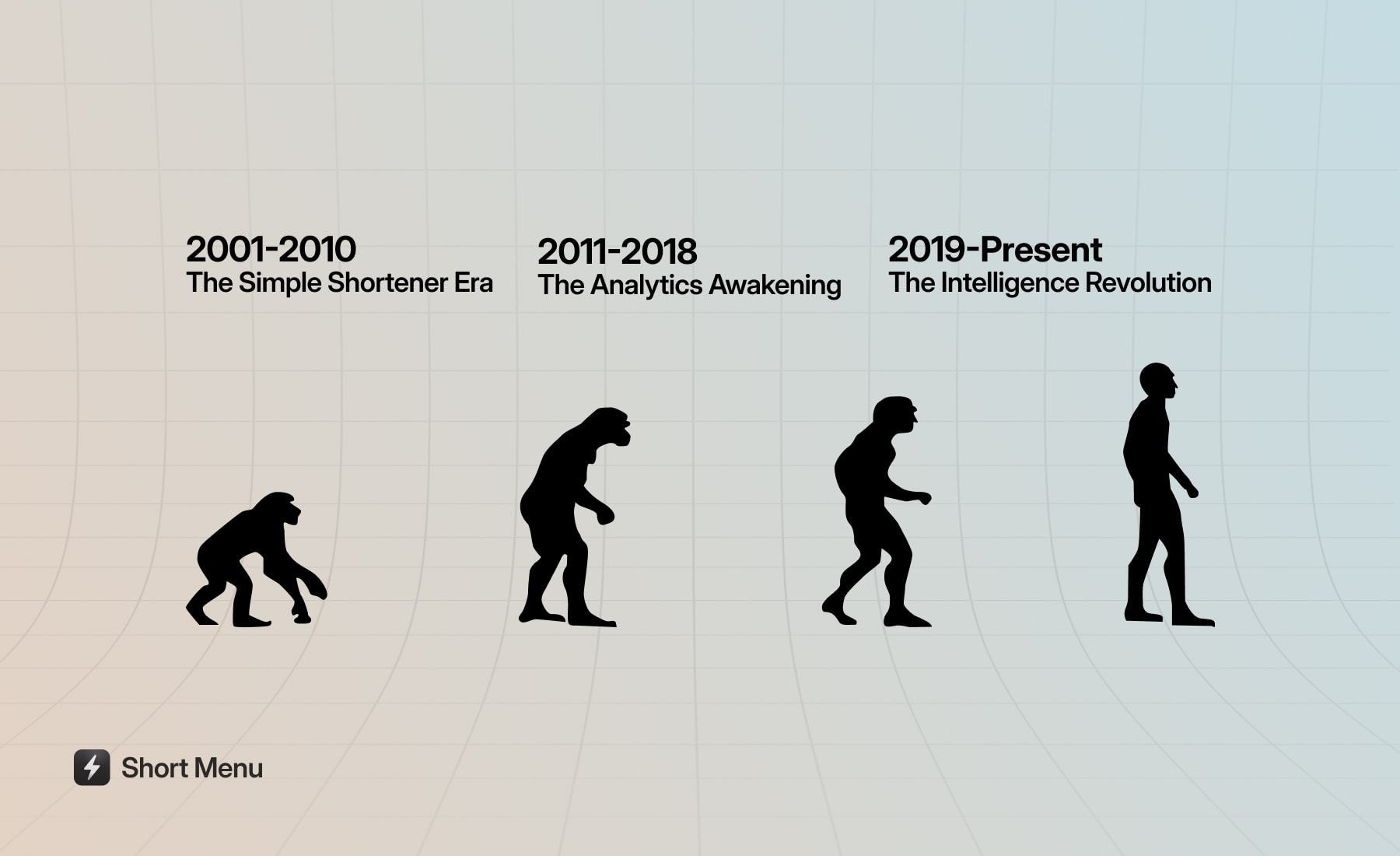 Evolution of link management from basic URL shorteners to modern intelligent platforms
Evolution of link management from basic URL shorteners to modern intelligent platforms
Beyond Basic URL Shortening
The evolution of link management mirrors the transformation of digital marketing itself. What started as a simple need to shorten long URLs has evolved into a sophisticated system for tracking, analyzing, and optimizing marketing performance across multiple channels.
Think of basic URL shorteners like a pocket notebook – they're handy for quick notes but inadequate for managing a growing business. Modern link management platforms, by contrast, work like a smart assistant who not only organizes your information but analyzes it to provide actionable insights.
The transformation has been dramatic:
2001-2010: The Simple Shortener Era
- Basic URL shortening
- Click counting
- Manual tracking via spreadsheets
2011-2018: The Analytics Awakening
- Basic click analytics
- Geographic data
- Platform detection
- Custom link endings
2019-Present: The Intelligence Revolution
- Advanced audience insights
- Cross-platform campaign tracking
- Automated tagging and organization
- Predictive analytics
- Integration with marketing tools
- Brand customization
The Modern Link Management Landscape
Today's marketing campaigns span an average of 5-7 different platforms, each with its own tracking requirements and audience behaviors. This complexity demands a fundamentally different approach to link management.
Modern link management isn't just about making URLs shorter – it's about creating an intelligent system that transforms how you handle digital campaigns. Think of it like upgrading from a basic fitness tracker that counts steps to a sophisticated smartwatch that monitors everything from heart rate to sleep patterns.
A professional link management system:
- Automatically organizes links by campaign, platform, and purpose
- Provides real-time performance insights
- Enables quick decision-making through comprehensive analytics
- Maintains brand consistency across all channels
- Scales effortlessly as your campaigns grow
📊 By the Numbers: Link Management in 2024
- 73% of marketers save 5+ hours weekly with professional link management
- Companies using advanced link analytics see a 32% increase in campaign ROI
- 89% of successful multi-channel campaigns rely on integrated link management
- Teams using automated link organization report 60% fewer tracking errors
2. Core Components of Professional Link Management
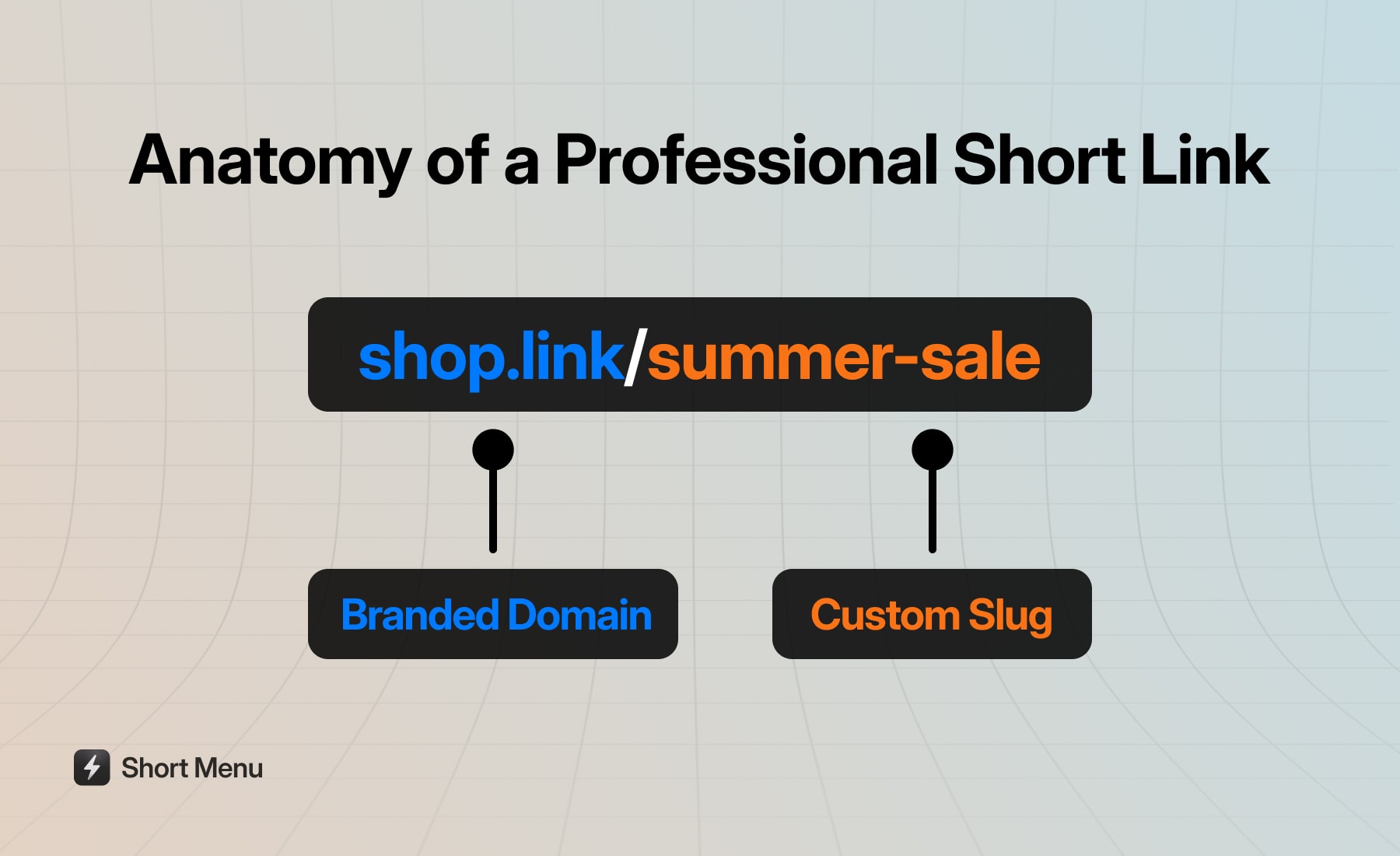 Diagram showing the components of a professional short link including branded domain and custom slug
Diagram showing the components of a professional short link including branded domain and custom slug
Strategic Link Creation
Gone are the days when link shortening meant simply generating random characters. Today's strategic link creation focuses on building memorable, branded, and trackable links that enhance your marketing efforts.
The foundation of professional link management starts with three critical elements: branded links and UTM parameters. Let's break down why each matters for your marketing success.
Branded Links: Your Digital Business Card
Every shortened link is an opportunity to reinforce your brand. Using branded links (like shop.link/summer-sale instead of bit.ly/x1y2z3) can increase click-through rates by up to 34%. They build trust, improve recognition, and make your links more memorable across all marketing channels. Branded links get you:
- Complete ownership of your link ecosystem
- Enhanced brand credibility
- Protection against service changes
- Improved link trust and click-through rates
UTM Parameters: Your Campaign Compass
Think of UTM parameters as your campaign's GPS system. These small but powerful tracking codes help you understand:
- Which platforms drive the most traffic
- Which campaigns perform best
- How different audience segments interact with your content
- What content types generate the highest engagement
💡 Pro Tip: 5 Questions to Ask Before Creating Any Marketing Link
- What campaign does this link support?
- Which platforms will this link appear on?
- What specific content or offer does it promote?
- How will you measure its success?
- Does the link format match your brand guidelines?
Centralized Link Organization
The key to effective link management lies in systematic organization. Without it, even the best-branded links can become a chaotic mess. Modern link management platforms offer sophisticated organization tools that turn link chaos into clarity.
Tag-Based Categorization
Think of tags as your link library's filing system. An effective tagging strategy might include:
- Campaign names (Holiday2024, SpringLaunch)
- Platforms (Instagram, Email, LinkedIn)
- Content types (Blog, Product, Promotion)
- Team members (MarketingTeam, SalesTeam)
- Regions or languages (EMEA, APAC, ES, FR)
Campaign Grouping
Smart campaign grouping allows you to:
- Track overall campaign performance at a glance
- Compare results across different initiatives
- Quickly access related links
- Share campaign data with stakeholders
Analytics and Tracking
The true power of professional link management lies in its ability to provide actionable insights through comprehensive analytics. Modern tracking capabilities go far beyond simple click counts.
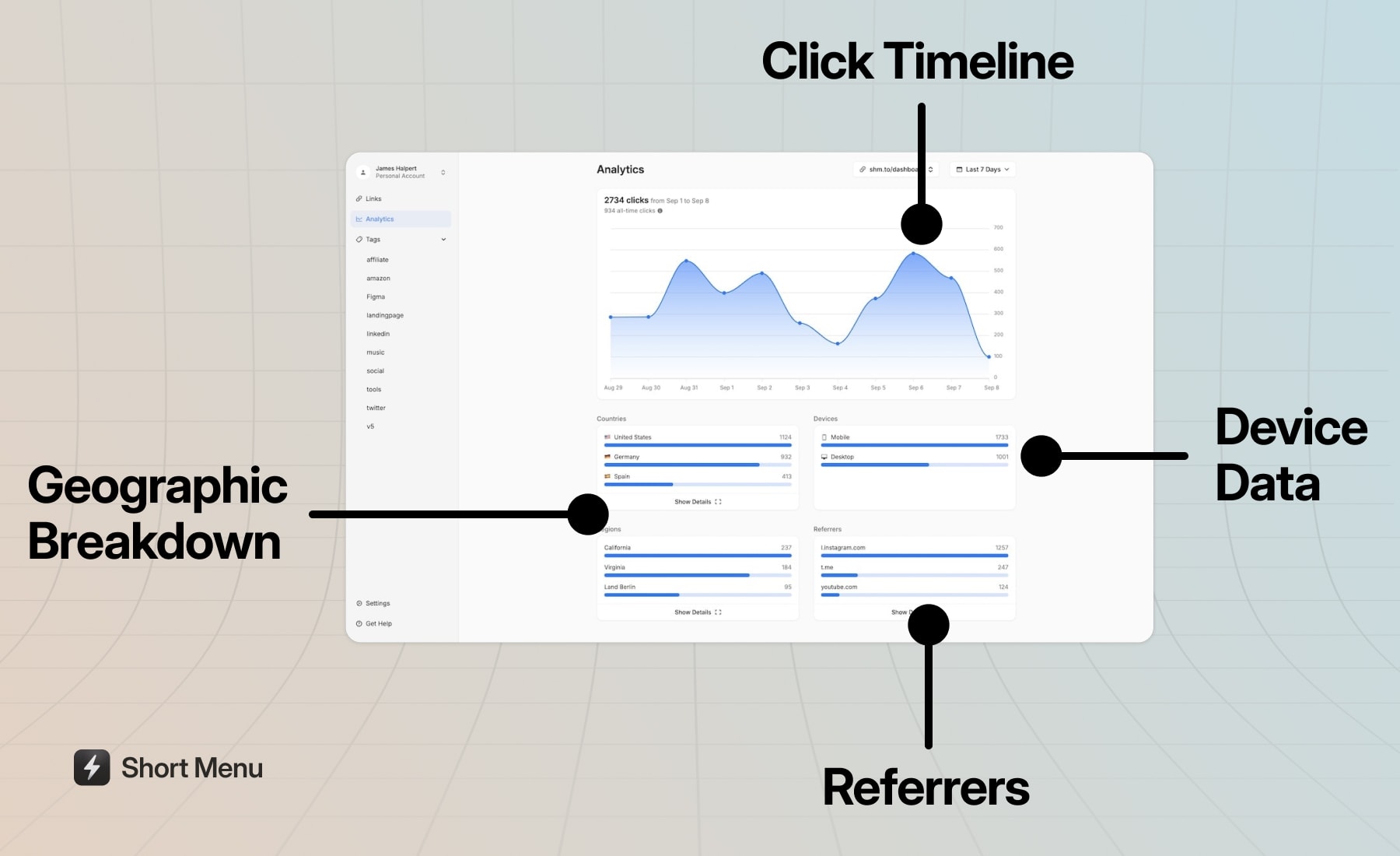 Link analytics dashboard displaying Click Timeline, Geographic Data, Device Analytics, and Referrer Tracking
Link analytics dashboard displaying Click Timeline, Geographic Data, Device Analytics, and Referrer Tracking
Essential Metrics
Today's link management platforms track:
- Click-through rates across different platforms
- Geographic distribution of your audience
- Device preferences of your users
- Peak engagement times
- Referral sources
- Conversion patterns
📈 Expert Insight: What Top Marketers Track
- Engagement patterns by time zone
- Mobile vs. desktop conversion rates
- Social platform performance comparisons
- Campaign ROI by geographic region
- Audience segment response rates
Geographic and Demographic Insights
Understanding where and who clicks your links helps:
- Optimize content delivery times
- Tailor campaigns to specific regions
- Identify untapped market opportunities
- Refine targeting strategies
Device and Platform Analytics
Knowing how your audience accesses your content is crucial. Modern analytics track:
- Mobile vs. desktop usage
- Operating system preferences
- Browser statistics
- App-based engagement
- Social platform performance
By mastering these core components, you transform your link management from a basic utility into a powerful marketing intelligence tool. The key is understanding how each element works together to create a comprehensive system that drives better results.
3. Practical Applications Across Marketing Channels
Understanding the theory of link management is one thing – putting it into practice across different marketing channels is another. Let's explore how to implement professional link management strategies across your key marketing channels.
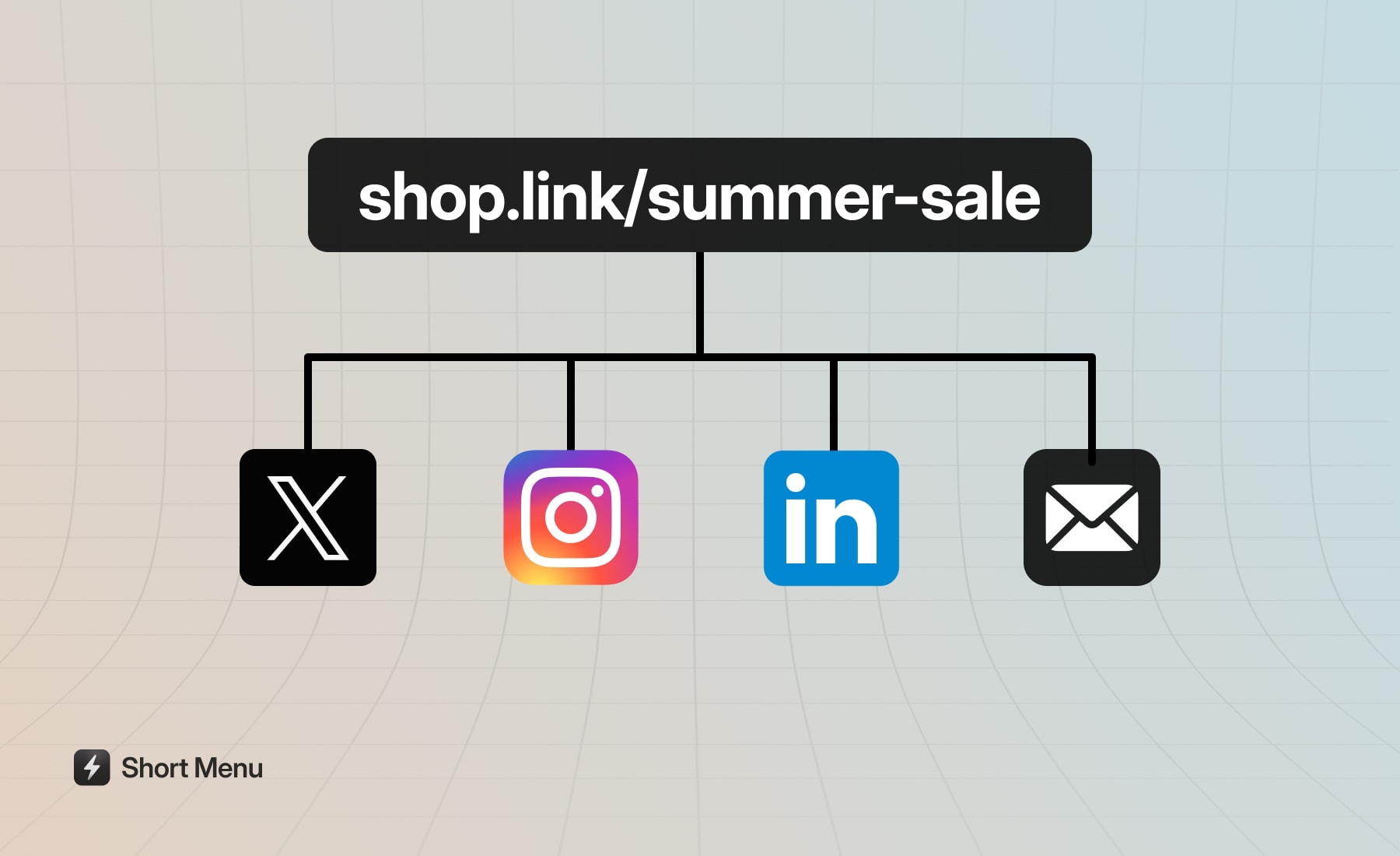 Flowchart illustrating how links move across different media platforms
Flowchart illustrating how links move across different media platforms
Social Media Marketing
Social media presents unique challenges for link management. With character limits, platform-specific formats, and varying audience behaviors, you need a tailored approach for each platform.
Profile Bio Links
Your bio link is prime digital real estate. Modern link management turns this single link into a powerful marketing hub:
- Create dynamic landing pages that update automatically
- Track which bio content drives the most engagement
- A/B test different layouts and offers
- Segment traffic by platform and campaign
💡 Profile Bio Optimization Tips
- Update bio links weekly to feature current campaigns
- Use custom URLs that match your brand voice
- Track which content types perform best
- Segment analytics by platform source
Story Links and Swipe-Ups
Stories have become a primary engagement channel. Optimize your story links by:
- Using branded short links that don't distract from visual content
- Tracking swipe-up rates by content type
- Analyzing peak engagement times
- Testing different call-to-action placements
Cross-Platform Campaign Tracking
Managing campaigns across multiple platforms requires sophisticated tracking:
- Compare performance across different social networks
- Identify platform-specific engagement patterns
- Optimize posting times based on platform analytics
- Track cross-platform campaign ROI
Email Marketing
Email remains one of the highest-ROI marketing channels, and professional link management can make it even more effective.
Newsletter Link Optimization
Smart link management transforms newsletter performance:
- Track individual link performance within newsletters
- Identify which content types drive the most clicks
- Monitor geographic engagement patterns
- Compare desktop vs. mobile engagement
✉️ Email Link Best Practices
- Use consistent branded links for better recognition
- Implement click tracking for each content section
- Test different link placements and formats
- Monitor time-based engagement patterns
- Track cross-device user journeys
A/B Testing with Tracked Links
Take your email testing to the next level:
- Compare different CTAs with identical content
- Test link placement effectiveness
- Analyze engagement patterns by email segment
- Track conversion paths from email to purchase
Content Marketing
Content marketing success depends on effective distribution and accurate tracking. Professional link management provides the insights needed to optimize your content strategy.
Blog Post Link Management
Transform your blog content distribution:
- Track engagement across different content types
- Monitor social sharing patterns
- Analyze traffic sources and reader behavior
- Identify top-performing content themes
Content Distribution Tracking
Optimize your content reach with sophisticated tracking:
- Monitor content performance across channels
- Track engagement patterns by platform
- Analyze sharing and republishing impact
- Measure content ROI by distribution channel
Evergreen Content Strategy
Make your evergreen content work harder:
- Track long-term content performance
- Identify seasonal engagement patterns
- Monitor content decay rates
- Optimize update and republishing schedules
📚 Content Distribution Link Map
- Primary Channels: Direct blog traffic, email newsletters, social media
- Secondary Channels: Industry forums, partner sites, syndication platforms
- Tertiary Channels: Affiliate links, archived content, resource libraries
By implementing these practical strategies across your marketing channels, you create a cohesive system that not only tracks performance but provides actionable insights for continuous improvement.
4. Automation and Integration
As your marketing efforts scale, manual link management becomes unsustainable. Automation and integration capabilities transform link management from a time-consuming task into a streamlined, efficient process.
Modern link management platforms offer powerful automation capabilities that save time and reduce errors, through tools like Zapier, Airtable and Make.com.
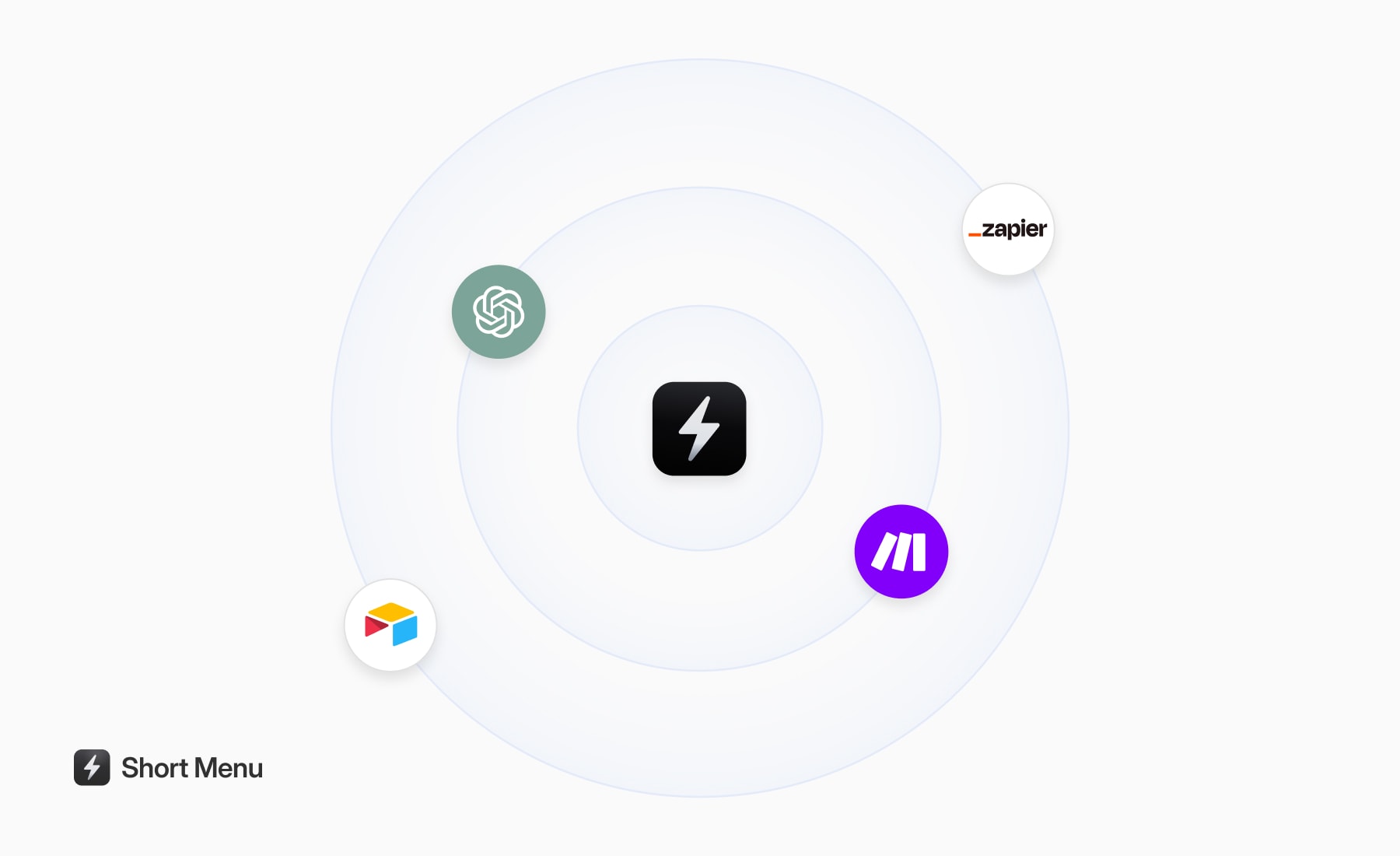 Network diagram showing link management platform integrated with various automation tools
Network diagram showing link management platform integrated with various automation tools
Automated Link Creation
Set up systems to automatically:
- Generate branded links for new content
- Apply consistent UTM parameters
- Tag links based on predefined rules
- Update bio links on a schedule
Smart Campaign Management
Automate campaign workflows:
- Schedule link updates across platforms
- Rotate promotional links automatically
- Update landing pages based on campaign timing
- Generate automated performance reports
🤖 Top Automation Use Cases
- Automatic link creation when publishing blog posts
- Scheduling promotional link rotations
- Updating social bio links on a calendar
- Auto-tagging new links based on source
Conclusion
Link management has evolved from a simple utility into a crucial component of modern digital marketing. By implementing the strategies outlined in this guide, you're not just shortening URLs – you're building a comprehensive system for tracking, analyzing, and optimizing your digital presence.
Key Takeaways
- Strategic Foundation
- Implement branded links for better recognition
- Use consistent UTM parameters for accurate tracking
- Leverage custom domains for professional presence
- Organizational Excellence
- Develop a clear link taxonomy
- Implement systematic tagging
- Maintain consistent naming conventions
- Analytics Mastery
- Track comprehensive performance metrics
- Analyze cross-channel campaign effectiveness
- Use data to inform marketing decisions
- Automation & Integration
- Streamline routine tasks through automation
- Connect with existing marketing tools
- Build scalable workflows
Next Steps
Ready to transform your link management approach? Start with these actions:
- Audit Your Current System
- Review existing link management practices
- Identify gaps and inefficiencies
- List priority improvements
- Implement Core Components
- Set up branded short links
- Establish consistent tracking parameters
- Create an organizational system
- Build Your Stack
- Choose appropriate automation tools
- Set up key integrations
- Develop standard operating procedures
🎯 Quick Start Checklist
- Set up a custom short domain
- Create link naming conventions
- Establish tracking parameters
- Configure basic automations
- Connect essential tools